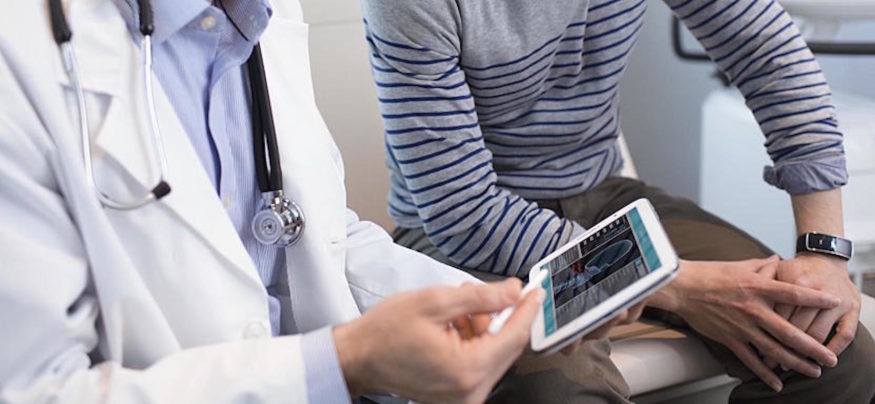A hospital can be an intimidating place for a patient and their family members — medical terms can seem like a different language, nurses and doctors can prove hard to find, and things occur at either warp speed or not quickly enough. Many opportunities exist to improve on the hospital patient experience, and technology can play a pivotal role in transforming a stressful environment into a familiar one with the digital and mobile conveniences we’re used to.
Navigating the Physical Space
Hospitals are big places, to say the least; many have multiple buildings connected via corridors built to accommodate expanding infrastructures pieced together within limited real estate. There are many elevator banks, floors and departments that patients and caregivers need to navigate during a hospitalization. A patient may be in the emergency room, a procedure or operating room, recovery area, rehabilitation or other department. Usually, there isn’t much time for anyone to get their bearings, but digital signage is one way in which hospitals can easily assist in navigating the physical space and convey relevant information to patients, caregivers and even hospital personnel.
Patient Care
A hospital room consists of four walls, many electrical outlets, medical equipment (with fixed or variable functions) and the potential for wireless and mobile devices which can be used in relation to patient care. One active area of technology development and adoption is focused on the so-called “point of care,” or where the patient actually is. This usually involves clinical tools which can interface with the patient via bio-sensors, providing vital signs and other body-derived data, as well as the electronic health record. Other technologies that are integral parts of the “smart room” and can impact the hospital patient experience include televisions specially designed for hospitals and tablets for patient bedside controls and communications.
Communication and Culture
Communication is a key component of not only the hospital patient experience but also patient safety. Mobile technology tools and devices which facilitate better patient hand-offs at shift changes are being utilized to decrease errors, in turn improving patient safety. The vast majority of physicians and nurses use mobile phones and tablets in the workplace. According to one study by Kantar Media, tablets are the most-used mobile devices for accessing medical journals, newspaper and magazine apps, electronic health records (EHR) and patient education tools.
Patient and Caregiver Education
Patient and caregiver education includes information regarding the diagnosis, treatment options and anything else necessary for them to participate in their own care beyond the hospital stay. More attention is being devoted today to digital and mobile delivery of that information. The digital format allows for the review of the data anytime and anywhere, as well as the ability to share it with others. The ideal digital health tool for patient education can be designed and used today. This type of tool would incorporate appropriate health literacy (with information that can be understood by anyone), be interactive to maintain interest and incentivize use, be able to interact with the EHR and address the needs and responsibilities of the caregiver.
The Discharge Process
One might consider the day of discharge from the hospital the most dangerous day of the entire stay. The hospital discharge process is a daunting one even for the most educated or experienced patient. It is commonly quick, confusing and overwhelming for all involved on the receiving end of the deluge of facts and recommendations. Digital technology tools can help in delivering high-quality, helpful patient education. Examples of such tools include Echo by CipherHealth and LiberateHealth, which record the discharge conversations in association with digital patient education content and instructions. This is a significant opportunity to improve patient safety by minimizing the chance that critical information may be overlooked or misunderstood as the patient heads home to heal.
Learn more about technology solutions to improve patient care and assist caregivers.








